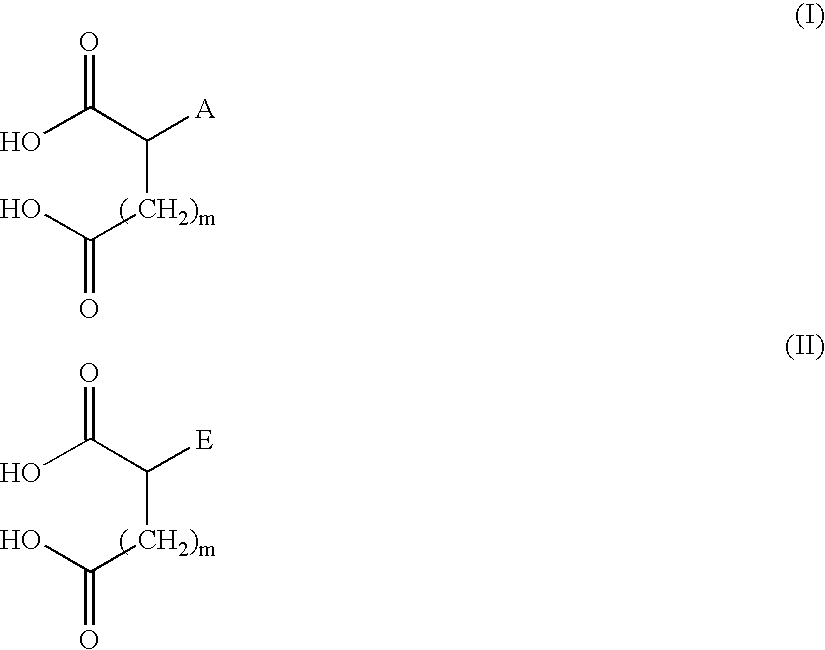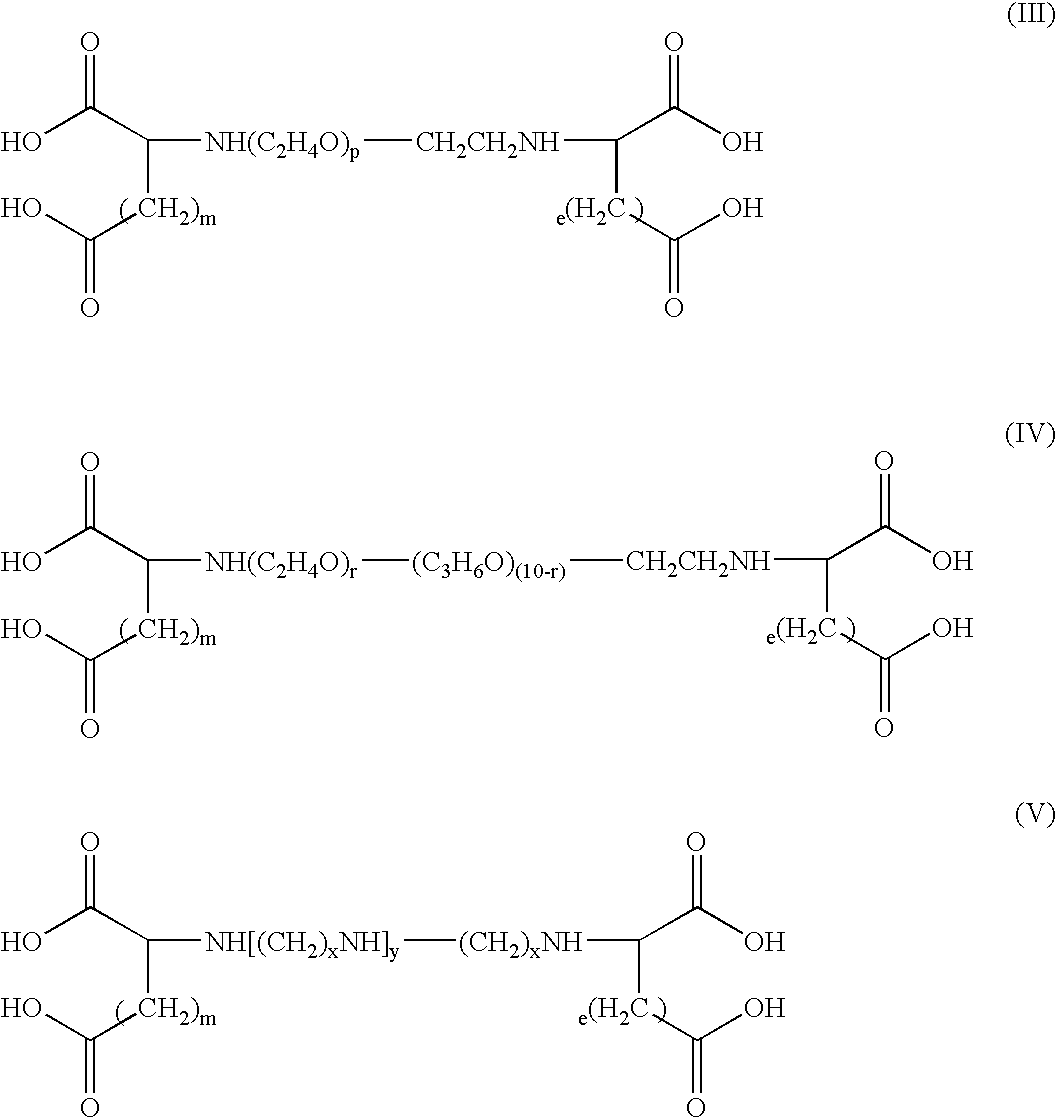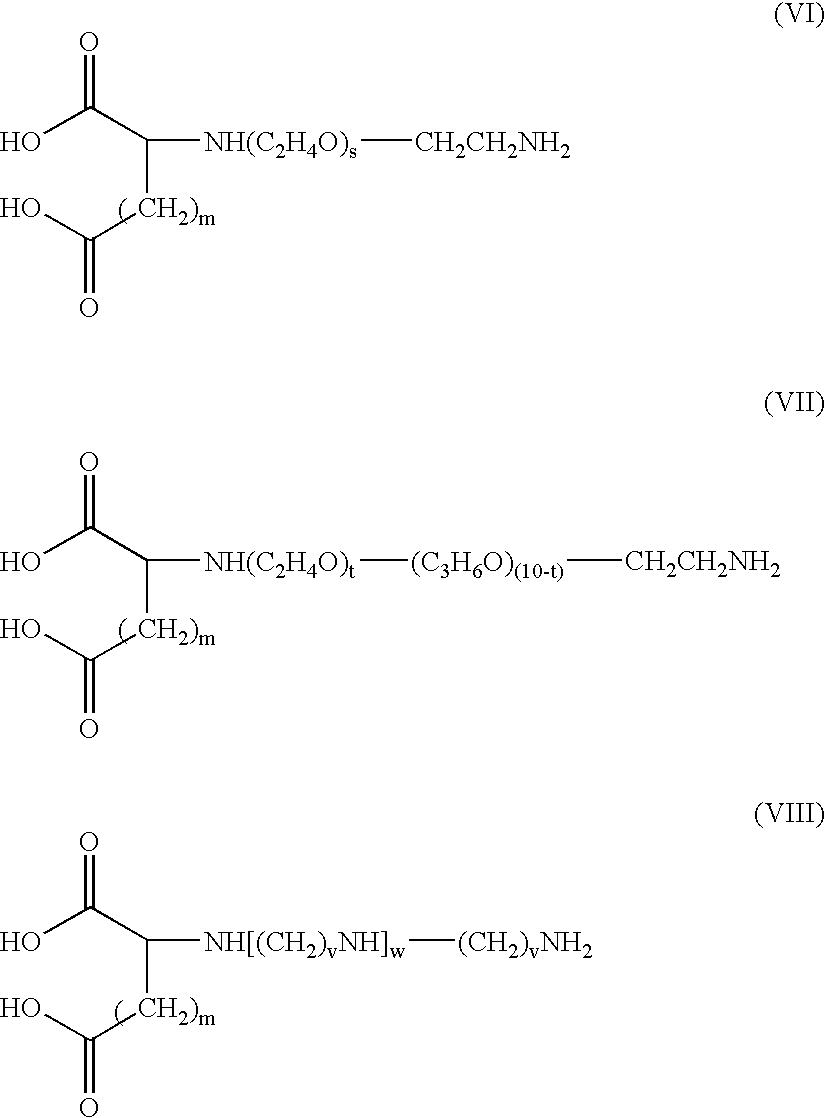High concentration surfactant compositions and methods
a surfactant composition and concentration technology, applied in the field of surfactants, can solve the problems of inability to remove fluidizers, such as solvents, difficult or costly to remove from the medium, and inability to meet the needs of cleaning, etc., and achieve the effects of reducing the number of toxicological, physiological, environmental, and toxicological effects
- Summary
- Abstract
- Description
- Claims
- Application Information
AI Technical Summary
Benefits of technology
Problems solved by technology
Method used
Image
Examples
example 1
Preparation of Betaine Composition A
Materials used in the preparation of highly concentrated betaine Composition A are provided in Table 1.
TABLE 1IngredientParts by Weight (As Is)Deionized water48Trisodium sulfosuccinate (39%)10Cocamidopropyl dimethylamine29Sodium monochloroacetate (SMCA)12Sodium hydroxide (50%)1Sulfuric acid (96%)0.1
About 150 grams of trisodium sulfosuccinate solution was combined in a glass reactor with about 708 grams water to form a sulfosuccinate solution. About 192 grams of SMCA was then added to the sulfosuccinate solution, followed by about 450 grams of cocamidopropyl dimethylamine. The resulting reaction mixture was heated at about 90° C., with mixing agitation, to quaternize the amine and produce a solution of cocamidopropyl betaine. The pH (10% aqueous) of the reaction mixture was maintained in the range of about 8 and about 10.5 by the addition of sodium hydroxide solution. After about 12 hours, an additional 50 grams of water was added and the pH (...
example 2
Preparation of Betaine Composition B
Materials used in the preparation of highly concentrated betaine Composition B are provided in Table 2.
TABLE 2IngredientParts by Weight (As Is)Deionized water52Cocamidopropyl dimethylamine29Sodium chloroacetate12Sulfosuccinic acid (70%)3Sodium hydroxide (50%)3.5Hydrochloric acid (38%)0.8Sodium borohydride (12% by weight0.1in aqueous 50% sodium hydroxide)
About 24 grams of sodium hydroxide solution and about 20.6 grams of sulfosuccinic acid were combined with about 370 grams of water in a glass reactor. The resulting mixture was heated at about 55° C. with mixing agitation. About 205.5 grams of cocamidopropyl dimethylamine was added to the heated mixture, followed by about 82 grams of SMCA. The resulting reaction mixture was heated at about 85° C. to quaternize the amine and produce a betaine solution. The pH (10% aqueous) of the reaction mixture was maintained in the range of about 9 and about 10.5 by the addition of about 0.6 grams of sodium ...
example 3
Preparation of Betaine Composition C
Materials used in the preparation of betaine Composition C are provided in Table 3.
TABLE 3IngredientParts by Weight (As Is)Deionized water55Cocamidopropyl dimethylamine30Sodium chloroacetate12Sodium iminodisuccinate (IDS)3Sodium hydroxide (50%)0.4Hydrochloric acid (38%)0.7Sodium borohydride (12% by weight0.2in aqueous 50% sodium hydroxide)
About 21 grams of IDS was combined with 378 grams of water in a glass reactor, and the resulting solution was heated to about 50° C. About 215 grams of cocamidopropyl dimethylamine was added to the IDS solution, followed by about 86.1 grams of SMCA, and the resulting mixture was heated at about 88° C. to quaternize the amine and produce a betaine solution. The pH (10% aqueous) of the reaction mixture was maintained in the range of about 9 and about 10.5 by the addition of sodium hydroxide solution (about 3 grams total). After about 12 hours, about 1.3 grams of a sodium borohydride solution was added to the b...
PUM
 Login to View More
Login to View More Abstract
Description
Claims
Application Information
 Login to View More
Login to View More - R&D
- Intellectual Property
- Life Sciences
- Materials
- Tech Scout
- Unparalleled Data Quality
- Higher Quality Content
- 60% Fewer Hallucinations
Browse by: Latest US Patents, China's latest patents, Technical Efficacy Thesaurus, Application Domain, Technology Topic, Popular Technical Reports.
© 2025 PatSnap. All rights reserved.Legal|Privacy policy|Modern Slavery Act Transparency Statement|Sitemap|About US| Contact US: help@patsnap.com



